
As I played through the tutorial of Ninja Gaiden: Ragebound, I started to feel a fear very specific to videogames. You know the one: ‘If I’m already struggling in the training level, what chance am I going to have in the rest of the game?’
I know, I know, get all your games journalist jokes out of the way now. But I did have reason to be nervous with this one. It brings together the developers of unforgiving soulslike Blasphemous with the notoriously hard Ninja Gaiden series—a potentially lethal combo.
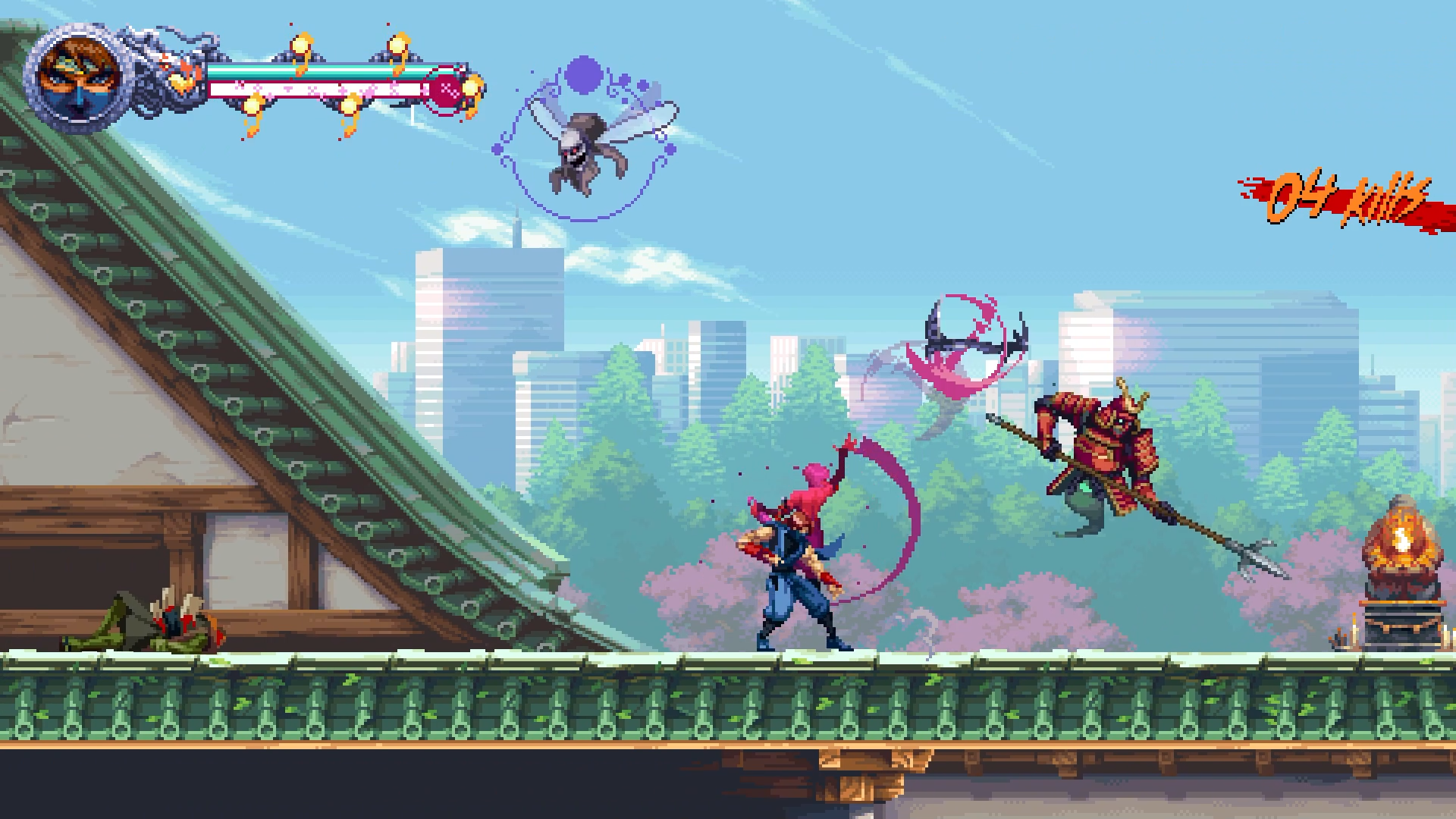
But the tools Ragebound gives you are as powerful as they are precise, and as my confidence with them grew, I found I was much more in control than I thought I was. A few hundred dead demons later, and I don’t think it’s quite as hard as you might expect—but it certainly is satisfying.
Like Blasphemous, Ragebound is a 2D side-scroller, and also like Blasphemous it’s gorgeous, though this time the slick pixel-art pops with colour instead of seething with grimdarkness. You play Kenji Mozu, a disciple of usual series protagonist Ryu Hayabusa off on his own bloody quest concurrent with the first Ninja Gaiden game.
I won’t pretend to be au fait enough with the series to understand the significance of this narrative set-up, but I suspect the story isn’t what anyone’s here for anyway. What that premise mainly provides is a very good excuse for carving your way through countless enemy ninjas, samurai, and monsters, and jumping over a lot of spiked pits.
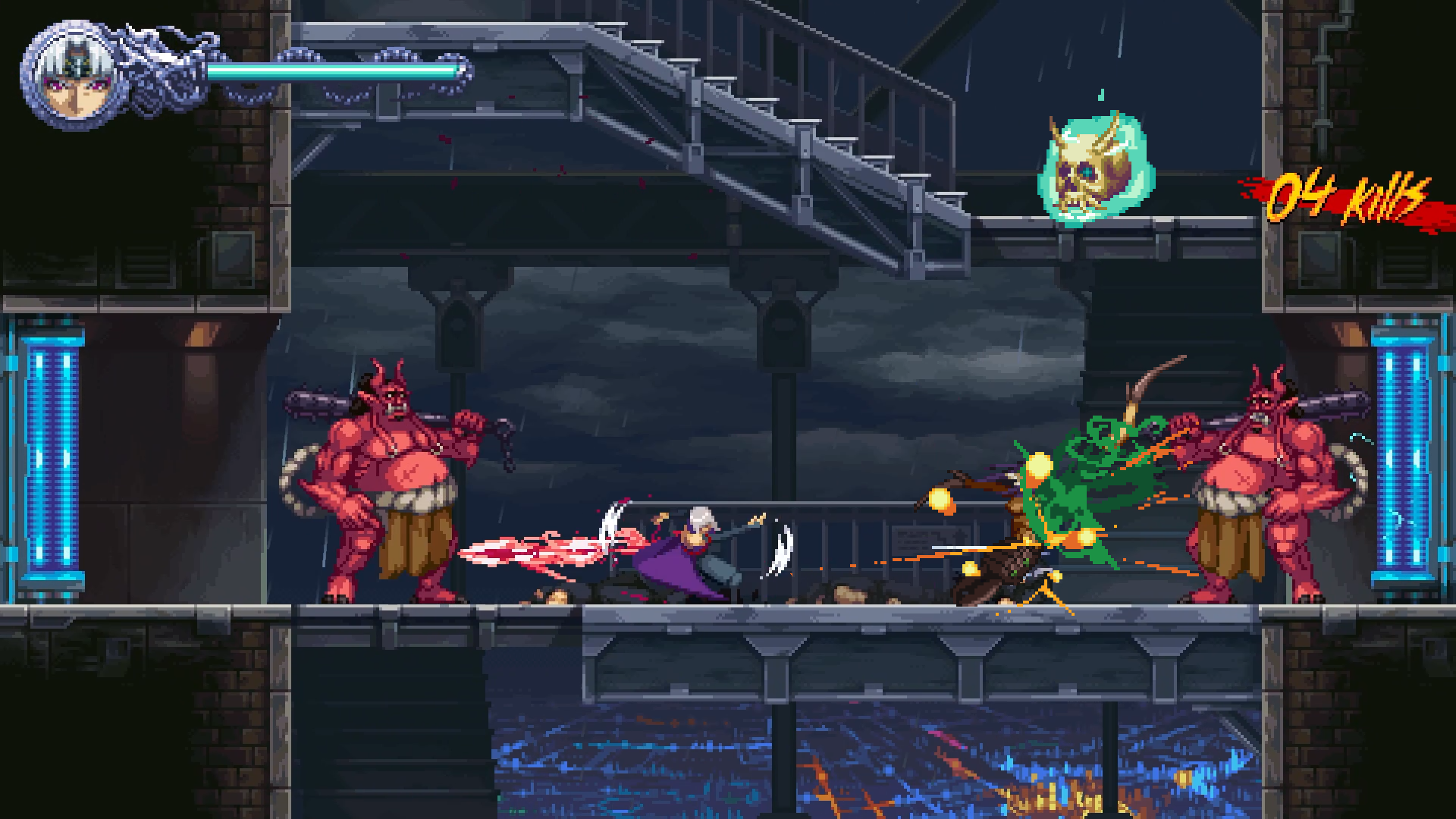
It all feels much faster and more responsive than Blasphemous, and your strikes are more decisive. Most enemies simply go down in one slash—the challenge comes in getting in close without taking a hit yourself, often dodging projectiles along the way.
Tougher enemies require a charged attack, but finding the seconds required to get one ready can be a big ask in busy combat encounters. The trick is to look out for enemies with glowing auras—slay one of those and you ready a charged attack instantly, though you need to use it quickly or lose it.
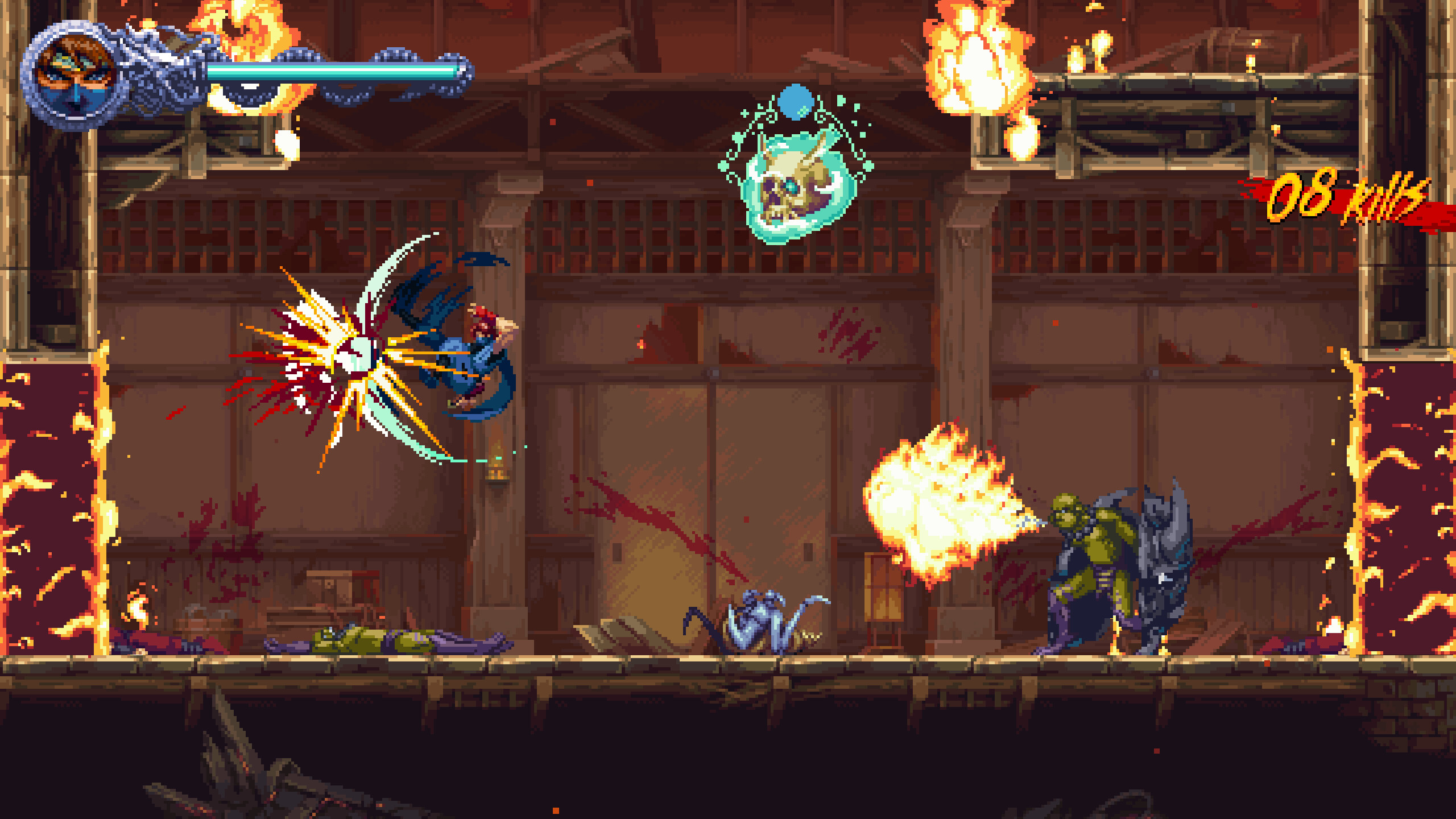
That means encounters aren’t just about clearing the room as fast as possible, they’re about efficient tactics. The best path through is often to kill enemies in a specific order, grabbing that free charged attack when you need it and then making sure it’s immediately deployed where it can do the most harm, instead of wasted on a lesser foe.
After battling my way through a burning village and slaying a tough-as-nails fire demon boss, the preview build skips me ahead to a later section, after Kenji has somehow merged with a female ninja called Kumori. They’re a classic odd couple—she’s from the Black Spider clan, a particularly rotten lot of ninjas that he’s honourbound to oppose. But apart from letting him bicker with her ghostly manifestation, their strange synthesis has also gifted him with many of her abilities.
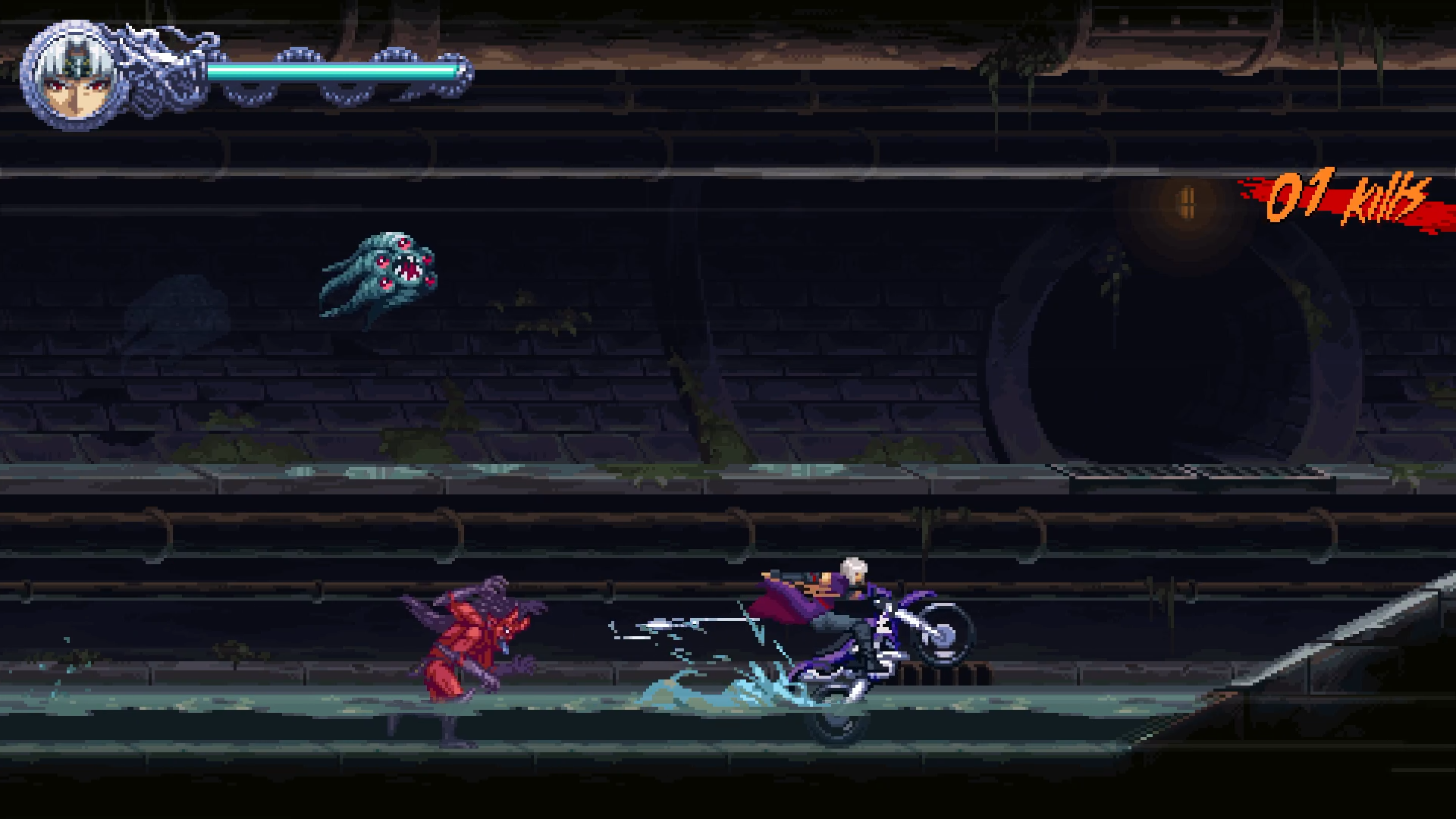
Playing through these later levels, it’s heartening to see how much these new powers keep things fresh and varied. Satisfying as the early going is, I had wondered if it might be a whole game of just practicing those core skills against progressively more demanding challenges. Instead, I’m learning to master new tools, including a selection of ranged attacks that hugely open up my options in battle, and a limited but screen-clearing super move for last-ditch comebacks.
Certain points in each level also allow you to let Kumori take over for brief jaunts through a demonic dimension, in order to unlock the path forward. These are essentially timed platforming levels, and they’re a great excuse to take the focus off fighting and onto the snappy movement controls for a bit. They’re no less precise and challenging, of course—particularly in sequences that require split-second use of her ability to throw a projectile and teleport to its destination.
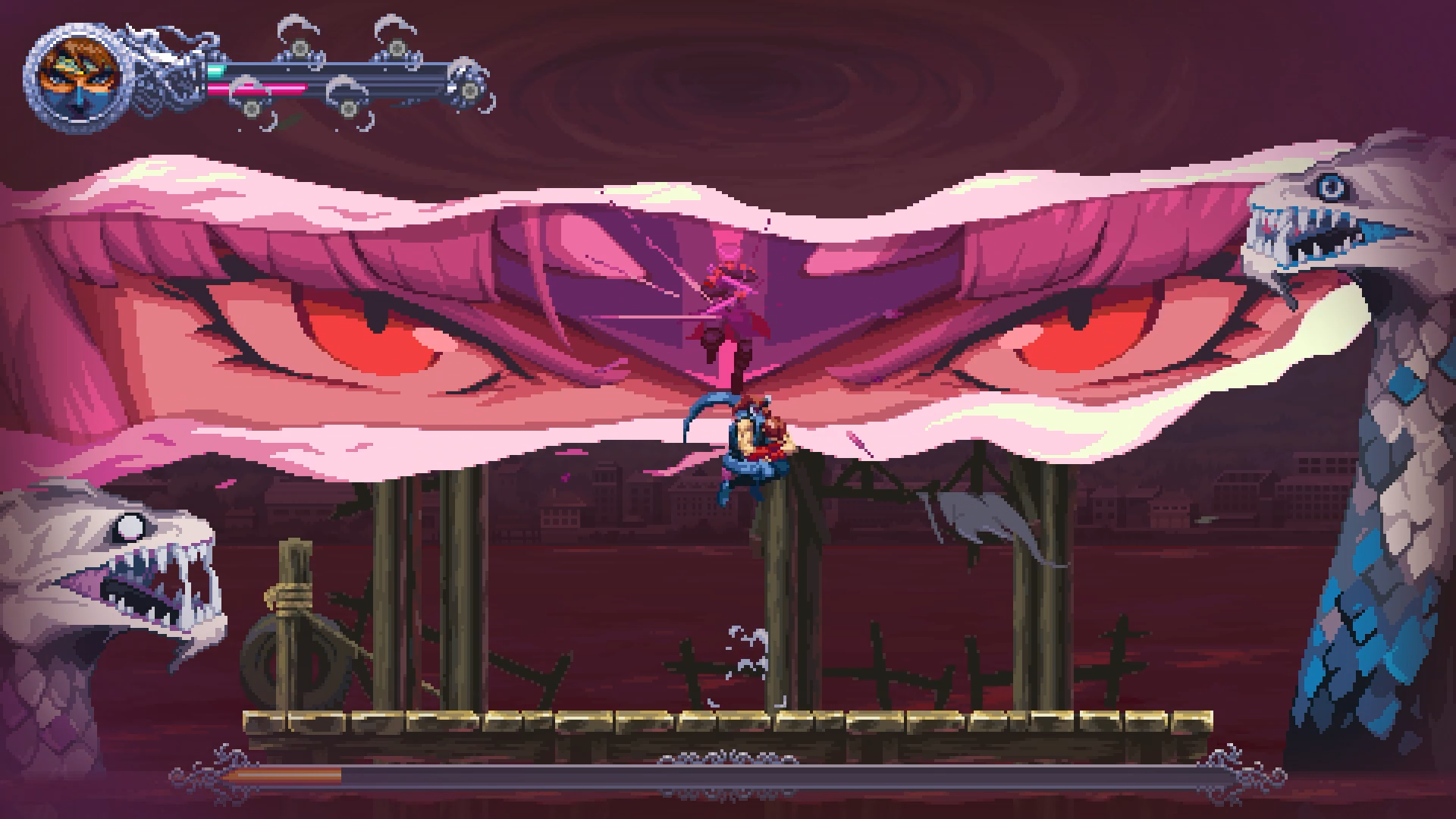
It’s an exciting new side to developer The Game Kitchen. While I appreciated Blasphemous’ palpable atmosphere, I felt it was too slow and unfair to really hook me. Ragebound feels like something very different—a quick and clever take on retro side-scrollers that’s demanding without feeling punishing.
Publisher Dotemu likely had some influence there—they’re known for putting out excellent old school beat-’em-ups like TMNT: Shredder’s Revenge and Streets of Rage 4 (and it’s got a very cool new one coming up called Absolum).
Either way, from the hour or so I’ve played, the result is shaping up to be a retro treat for anyone who loves the satisfying ‘shwick!’ of a katana. If that’s you, you shouldn’t have long to wait—the release is planned for the summer this year.
Source link










Add comment